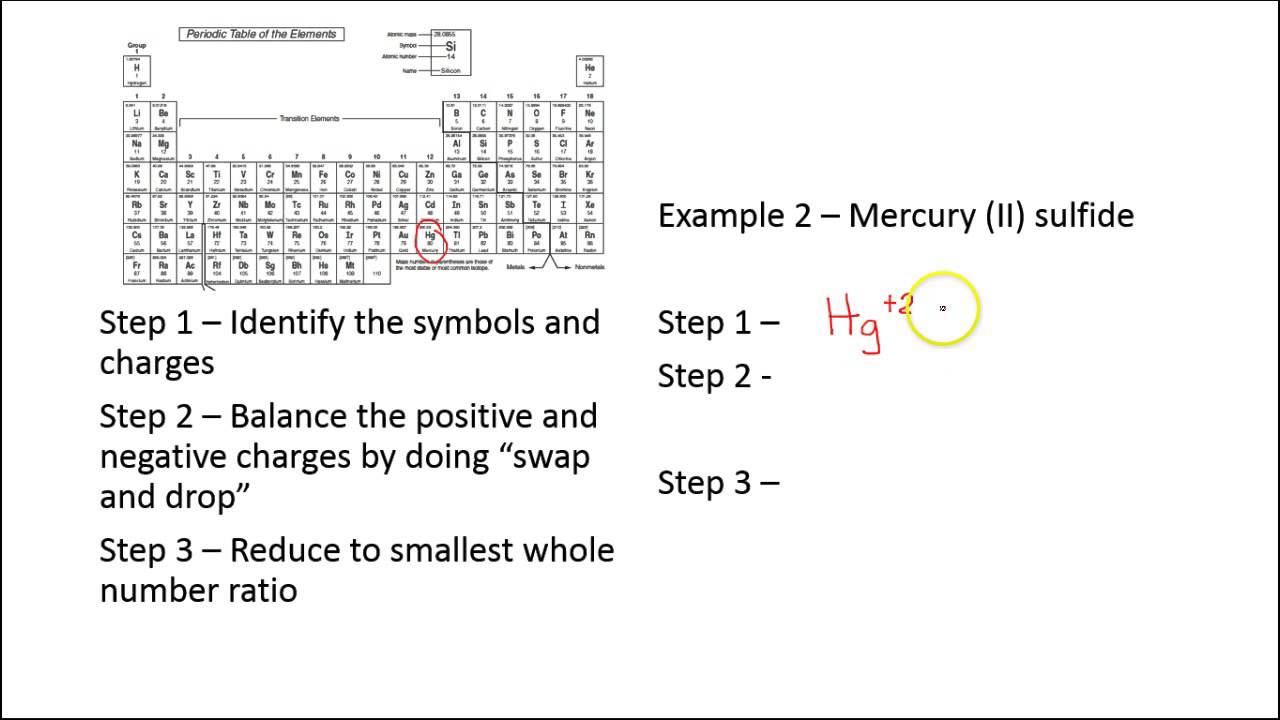Explain how to write an ionic formula – Unravel the secrets of ionic formula writing! This comprehensive guide will empower you to decipher the language of chemical compounds, unlocking their properties and applications.
Prepare to embark on a captivating journey as we delve into the world of ions, charges, and the art of balancing equations. Together, we’ll conquer the complexities of ionic formula writing, leaving you with a newfound understanding of these essential chemical building blocks.
Ionic Formula: Explain How To Write An Ionic Formula

Ionic compounds are formed when a metal loses one or more electrons to a nonmetal. The resulting ions have opposite charges and are attracted to each other by electrostatic forces. The chemical formula of an ionic compound is called an ionic formula and it shows the ratio of the ions in the compound.
Determining the Charges of Ions
The charges of ions can be determined by using the periodic table. Metals typically lose electrons to form cations, which have a positive charge. Nonmetals typically gain electrons to form anions, which have a negative charge. The charge of an ion is equal to the number of electrons lost or gained.
- For example, sodium (Na) loses one electron to form a cation with a charge of +1 (Na +).
- Chlorine (Cl) gains one electron to form an anion with a charge of -1 (Cl –).
Writing Ionic Formulas
To write an ionic formula, you need to know the charges of the ions involved. The formula is written as a combination of the cation and anion symbols, with the charges balanced so that the overall charge of the compound is zero.
- For example, to write the ionic formula for sodium chloride (NaCl), we start with the ions Na+and Cl –.
- The charges of the ions must balance, so we need to use a coefficient of 1 for Na +and a coefficient of 1 for Cl –.
- The ionic formula for sodium chloride is therefore NaCl.
Exceptions and Special Cases, Explain how to write an ionic formula
There are some exceptions to the general rules for writing ionic formulas. For example, some metals can form ions with variable charges. Iron, for example, can form ions with charges of +2 or +3.
Another exception is polyatomic ions, which are ions that are composed of more than one atom. Polyatomic ions have their own charges, which must be taken into account when writing ionic formulas.
- For example, the sulfate ion (SO 42-) has a charge of -2.
- To write the ionic formula for calcium sulfate (CaSO 4), we need to use a coefficient of 1 for Ca 2+and a coefficient of 1 for SO 42-.
Applications of Ionic Formulas
Ionic formulas are used in a variety of applications, including:
- Understanding chemical reactions
- Predicting the solubility and conductivity of compounds
- Developing new materials
Ionic formulas are an essential tool for chemists and other scientists.
Closure
Congratulations! You’ve now mastered the art of writing ionic formulas, a skill that will serve you well in your scientific endeavors. Remember, practice makes perfect, so keep honing your abilities and unlocking the secrets of the chemical world.
FAQ Section
Why is it important to write ionic formulas correctly?
Ionic formulas provide crucial information about the composition and properties of chemical compounds, enabling us to predict their behavior in reactions and understand their applications.
How can I determine the charges of ions?
The charges of ions are determined based on the number of electrons gained or lost by the atoms forming the ions. Cations (positively charged ions) lose electrons, while anions (negatively charged ions) gain electrons.
What are some common exceptions to the rules for writing ionic formulas?
Exceptions arise when dealing with polyatomic ions, which are groups of atoms that carry a net charge. These ions have specific charges that must be considered when writing ionic formulas.